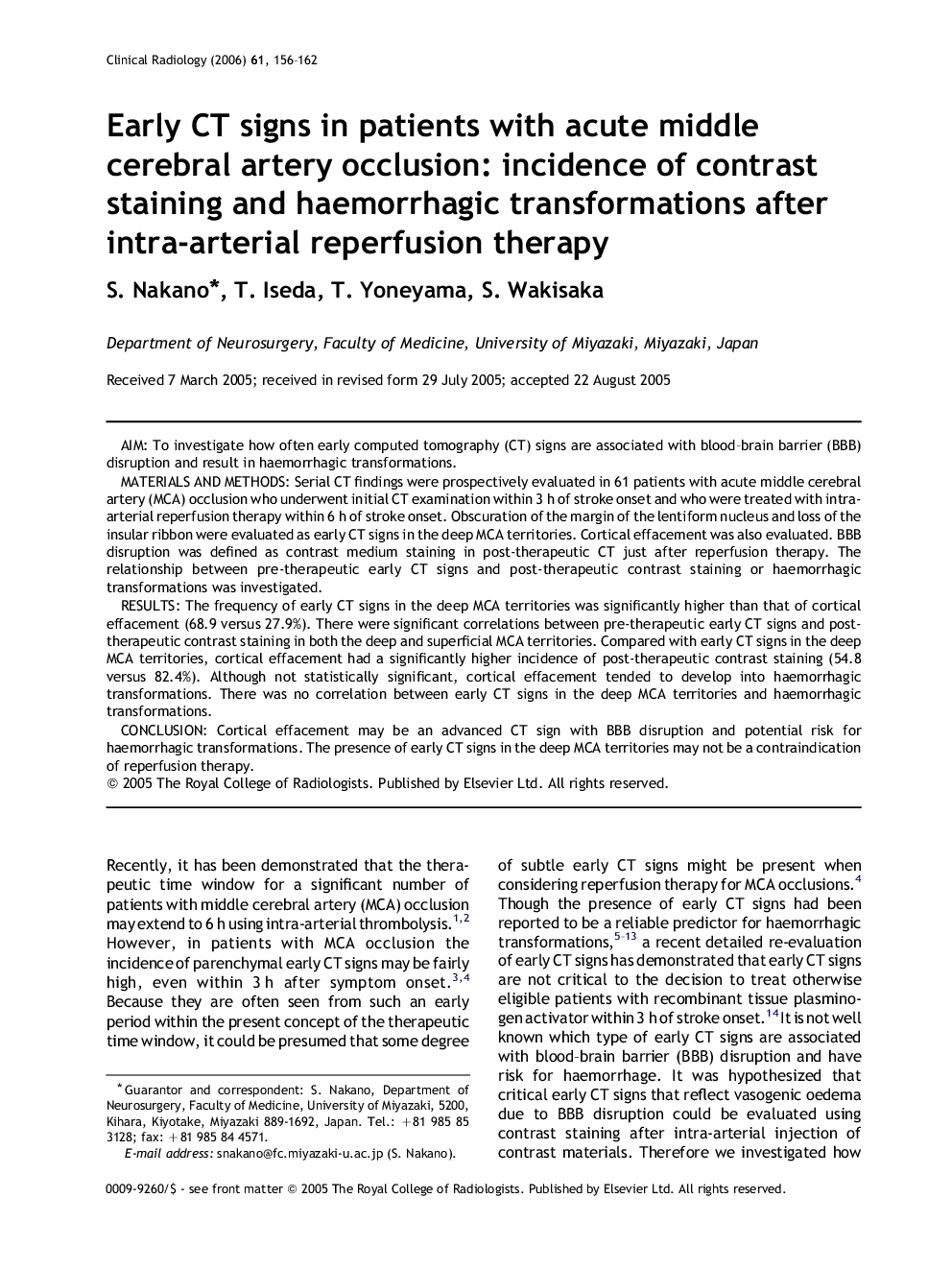| Article ID | Journal | Published Year | Pages | File Type |
|---|---|---|---|---|
| 3983961 | Clinical Radiology | 2006 | 7 Pages |
AIMTo investigate how often early computed tomography (CT) signs are associated with blood–brain barrier (BBB) disruption and result in haemorrhagic transformations.MATERIALS AND METHODSSerial CT findings were prospectively evaluated in 61 patients with acute middle cerebral artery (MCA) occlusion who underwent initial CT examination within 3 h of stroke onset and who were treated with intra-arterial reperfusion therapy within 6 h of stroke onset. Obscuration of the margin of the lentiform nucleus and loss of the insular ribbon were evaluated as early CT signs in the deep MCA territories. Cortical effacement was also evaluated. BBB disruption was defined as contrast medium staining in post-therapeutic CT just after reperfusion therapy. The relationship between pre-therapeutic early CT signs and post-therapeutic contrast staining or haemorrhagic transformations was investigated.RESULTSThe frequency of early CT signs in the deep MCA territories was significantly higher than that of cortical effacement (68.9 versus 27.9%). There were significant correlations between pre-therapeutic early CT signs and post-therapeutic contrast staining in both the deep and superficial MCA territories. Compared with early CT signs in the deep MCA territories, cortical effacement had a significantly higher incidence of post-therapeutic contrast staining (54.8 versus 82.4%). Although not statistically significant, cortical effacement tended to develop into haemorrhagic transformations. There was no correlation between early CT signs in the deep MCA territories and haemorrhagic transformations.CONCLUSIONCortical effacement may be an advanced CT sign with BBB disruption and potential risk for haemorrhagic transformations. The presence of early CT signs in the deep MCA territories may not be a contraindication of reperfusion therapy.
